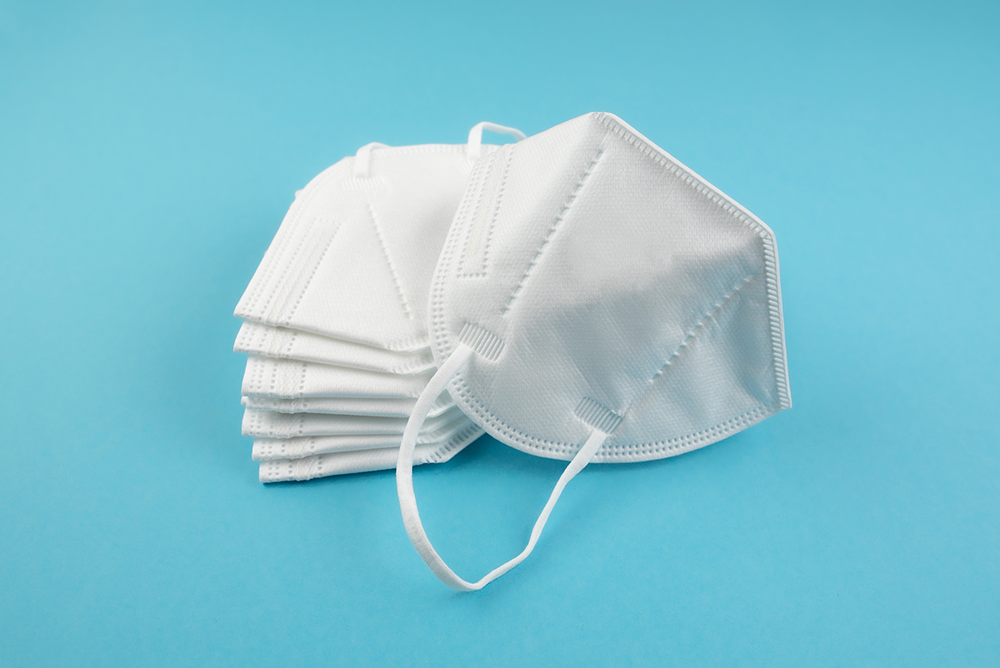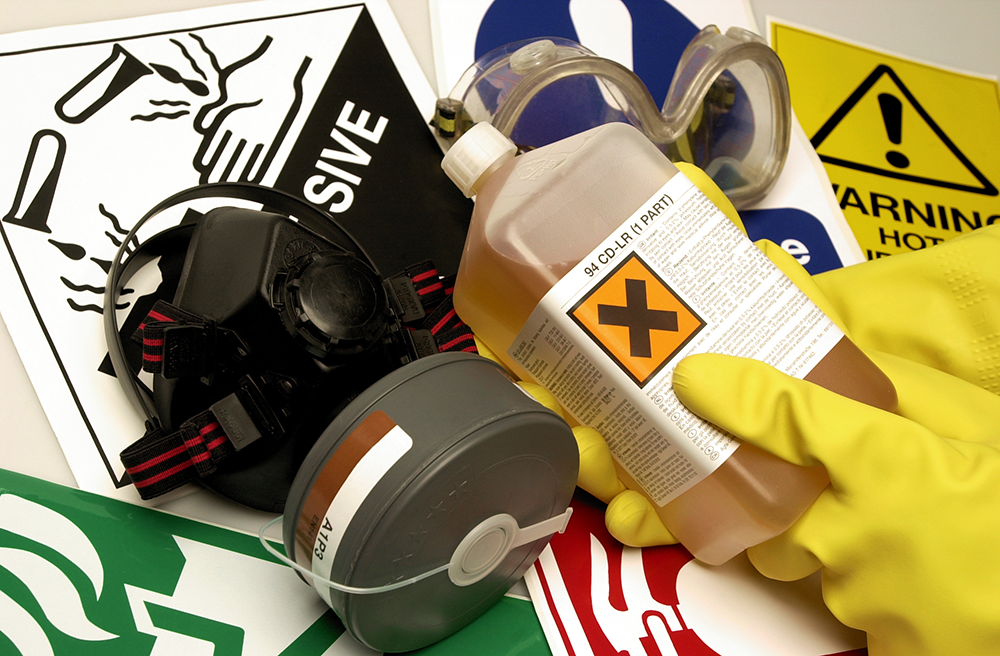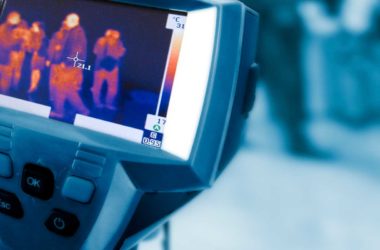Safety clothing has fast become an essential element of everyday life, especially for occupations where the working environment is plagued with potential risks. From the builders who wear a hard helmet, gloves, and safety shoes, to people working in laboratories wearing doctor-like lab coats that protect them against harmful chemicals, bacteria, or other high-risk substances in scientific facilities.
Without safety products and personal protection equipment, your personnel will be unable to carry out necessary tasks without risking serious injury. RND cares about their customers and provides solutions for many industries.
This guide explains how to ensure high levels of safety, focusing on the Personal Protection Equipment (PPE) requirements, and provides products that help ensure safety, especially in hazardous environments.
Personal Protection Equipment
Personal protection equipment (PPE) is essential in many areas; whether working in a hospital, lab, or maintenance and repair. Some of the devices listed below are likely to be required:
- Head protection: bump caps, hard and safety helmets, and other head protection products can prevent or reduce head and brain injuries by protecting against falling objects or debris, electric shock, and rain. Most head injuries are avoidable if adequate head gear is chosen.
- Eye protection: the vast majority of eye protection items, such as safety glasses, goggles, and face shields, might be required in construction jobs, labs where chemicals are used or working with projectiles and radiation.
- Body protection: safety clothing, such as laboratory coats, coveralls, vests, jackets, aprons, surgical gowns, leggings, shin guards, arm coverings, and complete body suits are crucial in many workplaces. For instance, disposable bodysuit prevent workers from coming into direct contact with a number of potentially hazardous compounds used to make composite products. These substances include resins, curing agents, and solvents, which are utilised in the bulk of composite manufacturing processes.
- Hearing protection: it protects the user’s hearing from harm caused by loud or noisy situations. When exposed to noise levels over a specific threshold at work, it is a legal necessity to be provided with and wear hearing protection. They are most often worn to protect staff in noisy environments are earmuffs and earplugs.
- Respiratory protection: protects the wearer from a multitude of risks and is required when employees are likely to be exposed to hazardous substances and vapours. Examples are: respiratory face masks and dust masks that filter out airborne particles caused by materials such as drywall, brick, wood, fibreglass, or silica.
The most important items of safety clothing
Safety is a key aspect for a properly functioning workplace. Problems occur when you are missing the right equipment and when hygiene policies are not fulfilled. RND has a solution to that. They offer affordable products that ensures your workforce’s safety. In the range are shoe protection, goggles, gloves, masks and coats, among others.
Hands protection
There are different types of hands protection for different applications. In the RND offer there are nitrile gloves (described below), conductive translucent gloves, full finger and half-finger glove liners. The latter reduce sweat and skin irritation caused by contact with latex, PVC, and other chemicals. ESD PU tip gloves are ideal for working with electronic components or disposable gloves and they ensure that you and your employees’ safety.
Nitrile gloves
RND has a range of nitrile gloves which have been designed to give protection in everyday tasks. If you have a rubber allergy, these are the best alternative to latex as they are made from a synthetic polymer which reduces the risk of skin irritation and allergic reaction. The material is tough and they are extremely resistant to punctures and tears, and more resistant to chemicals than latex. They are disposable and designed to give you great protection whilst carrying out daily tasks.

Body protection
Workwear and body protective clothes come in a variety of forms, sizes, materials, and weights. For example, wearing disposable bodysuits are especially useful for workers who will come into direct touch with composite, whereas ballistic armour helps absorb and minimise the effect of fragmentation from explosions and firearm-fired projectiles on the chest. They used to be quite heavy. Now, many protective clothes producers provide fabrics that are lightweight, totally breathable, resistant to heat, and highly visible. According to Army Technology, a new fabric covering has been developed to provide increased protection by repelling not just dust and filth, but also water, oil, and harmful substances.
Disposable coats and coveralls
In the RND offer, there are different types of coats designed to suit the cleanroom industry’s strict requirements offering excellent levels of comfort, breathability, and water vapour transfer. They are perfect for preventing cross-contamination; simply dispose of them when finished.

Other important features of disposable coveralls:
- full-body protection from harmful substances
- often constructed with double layers to ensure that the body will not come in contact with harmful substances even if the first layer is damaged
- reduce the possibility of employees coming into touch with hazardous chemicals through inadequately cleaned bodysuits
- eliminate the need for daily bodysuit washing
- reduce the time employees must spend maintaining and equipping personal protective equipment
Disposable coveralls are a great addition to the personal protection supply. RND offers disposable antistatic coveralls and lab coats at a great price.
Shoe protection
Whether the company requires safety shoes or just covers, it is important to protect feet against damage from water, salt, dirt, dust, UV rays, stains, and colour fading. Some of them provide safety for the wearer and also the environment. When a person wears a shoe cover before entering a house, factory, institution or any other facilities, germs and other impurities on their shoes or feet are prevented from entering. To prevent cross -contamination, they should never be worn for the second time in other areas.
Remember to check the regulations for your workplace environment when deciding whether safety shoes or shoe covers are necessary as they protect against different things.
Disposable shoe covers
When it comes to workplace safety, disposable shoe covers are sometimes overlooked but this product is a key part of the PPE clothing when trying to control cross-contamination. They are low-cost and easy to use. They do not need to be laced up, and you can just pull them over your shoe. Because of their adaptability, plastic disposable shoe covers are extremely popular in a wide range of sectors. If you work in a workplace that requires the highest levels of sterility, you can be confident that disposable shoe covers will exceed these requirements.
Shoe covers are very easy to put on and take off. They do not need to be laced up, and you can just pull them on over your shoe. Because they are stretchy, they can accommodate a larger range of shoe sizes. Even though they are intended for one-time use, they are surprisingly resilient and provides appropriate protection against liquids and particles such as dirt and bacteria.
Features of disposable shoe covers:
- Efficient
- Great elasticity
- Sterile
- Perfectly isolated from chemical liquids
- Non-slip and comfortable

Head & face protection
Relevant headwear protects employees from falling debris, low-hanging items, electrical hazards, and even direct sunshine or rain. Hard hats or safety helmets are commonly used by industrial and construction workers.
Have a look below at masks from RND that help protect you and your employees from hazardous airborne particles, dust, powders, and fine mists.
Masks
Depending on the industry you are working in, there are different requirements on the topic of face protection. Some masks, like a full face shield, protect both your eyes and the rest of your face. These are available in a variety of styles and materials and can be reusable or single-use.
RND offers particle filtering masks (described below), surgical and disposable cleanroom face masks with earloops.
Particle-filtering face masks (FFP)
Face masks with particle filters provide efficient protection from dust, mist, and fumes. Their filter fabric material prevents solid items from passing through, while the inside layers are electrostatically charged, ensuring that the user does not breathe in hazardous pollutants attached to them.
The classification system is made up of three FFP classes where ‘FFP’ is an abbreviation for “Filtering Facepiece”. The respiratory mask’s degree of protection is indicated by a number ranging from 1 to 3. The higher the number, the more successfully the mask filters airborne particles such as dust or liquid particles. As a result, FFP3 respirator masks can be used to protect against more dangerous compounds at higher concentrations than FFP1 and FFP2 breathing masks. The use of FFP3 is essential in workplaces where the occupational exposure limit value has been surpassed (OEL).
Filtering facepiece are part of Respiratory Protective Equipment (RPE) and they are the most commonly used in manufacturing environment, especially in metal and mining industries.

Eye protection
When working in industrial settings, the eyes and face are particularly sensitive and must be well protected. Chemical fumes or vapours, airborne dust particles, damaging light radiation, and other factors can all injure your eyes and face. A chemical splash in the eye, for example, can result in permanent blindness or considerable, painful, temporary damage. PPE such as safety glasses, goggles, laser-eyewear, surgical masks, dust masks, and other similar items provide the best protection.
Goggles
Eye goggles are common in industries that require eye protection from impact, chemicals, and other hazardous substances. The ones from RND fit fully to the face and eyes and are anti-fog and anti-scratch. Recommended applications include cleaning, construction, engineering, laboratories, food processing, light-duty maintenance and repair work, and working at sea or airports.

Hearing protection
Hearing protection aids protect a user’s hearing from harm caused by working in a loud or noisy environment. When exposed to noise levels over a specific level at work, it is a legal necessity to be provided with and wear hearing protection.
The types of ear protection are from basic earplugs to ear defenders. Currently, RND doesn’t stock any hearing protective products, but you can use the Distrelec webshop to find more PPE products.
Other items improving the safety of facility
Besides clothing, there are other aspects that should be considered in any workplace. Even office work that might seem less harmful, can cause some injuries as there are cables and electronic devices. For instance, inappropriate desks or chairs can cause health problems. This is why the facility should be prepared for any possible scenarios.
Workplace Hygiene
Every workplace must be hygienic and safe for employees and visitors. This applies to all workplaces, not just those which handle food and medical or personal items. It is critical to ensure that workers take care to cleansing themselves and changing filthy or contaminated clothing.
Therefore, workplaces should have hygiene policies and well-stocked first aid supplies as well as staff on site who are trained in giving first aid. To assist your team in keeping a clean and sanitary workstation, you need to provide goods such as clean wipes, sanitisers, and tissues. If such products are easily accessible, employees are more likely to use them. RND has wipes to prevent particle and fibre release, all four corners are laser cut and sealed.
Monitoring and safety markings
Aside from having the right equipment and training in place, workplace safety depends on the site being appropriately organised. This means, besides sufficient level of monitoring of workplace activities and of personnel, sites should be physically organised in a manner conducive to optimum safety. This includes labelling hazards or possible hazards with visible workplace signs.

RND, besides the relevant safety clothing, has some safety marking products. It is crucial that if a location is dangerous, it should be marked with appropriate safety tape and warning signs.
Features of the safety signs:
- They are self-adhesive signs and constructed from industrial grade plastic
- They have laminated top layer that protects the print from being worn off
- They are easy to apply to floors or walls
The right equipment to ensure health & safety at workplace
It is essential that companies ensure protection, whether it is in the cleaning, medical, or food industry, as the health and safety of employees are the most important factors in a workplace. It is the role of management to take responsibility for workplace protection and the safety systems that their sites have in place. Health and safety management, and other leaders of enterprises need to ensure that all personnel are equipped with the necessary PPE.
There are slightly different requirements, depending on the industry, but the clothing worn at work must always be clean and safe to guarantee that it does not endanger the wearer or others. It must be certified to the most recent health and safety standards, with the amount of protection and legal requirements varying greatly depending on the industry. The clothes people wear at work can be used to increase worker visibility or to protect them from the dangers and hazards of your workforce’s professional environment.
When the wearer is properly equipped with the right attire, technicians have to follow best practices and ensure that workflows are constantly monitored for potential dangers. It is only by ensuring adequate safety that risk can be kept to a minimum.











